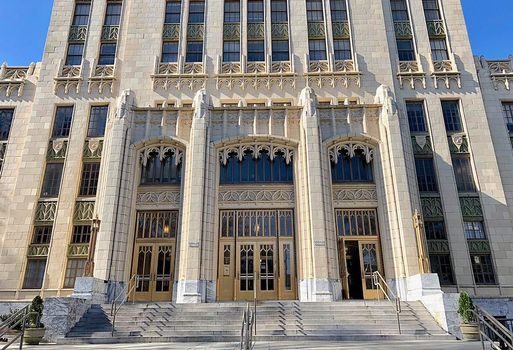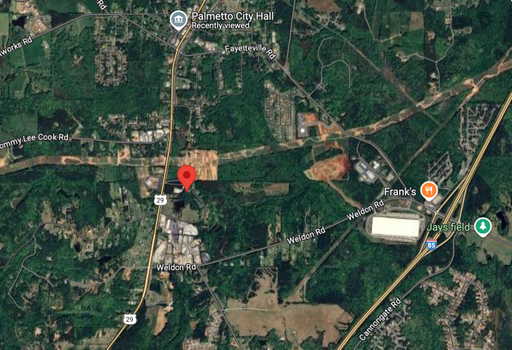Crash Course – Commercial Real Estate 101
“What is commercial real estate?”
Commercial real estate is an industry that is not necessarily widely known and promoted. Because of that, when some people hear the term real estate, they automatically think of a residential property. Most likely, the reason for this is because much of the population has either directly or indirectly experienced facets of the home-buying experience. On the surface, they may seem similar, but there are many, many differences between commercial real estate and residential real estate. Let’s talk about some of them. Welcome to your crash course – Commercial Real Estate 101.
“The main difference is…”
A property that provides a living space is considered residential real estate. On the flip side, a property that is exclusively used for business-related purposes with the intention of generating income, is considered commercial real estate. Commercial real estate is segmented into different niches to include retail, industrial, land, multi-family, mixed-use developments, and office. The performance of commercial property, including sales prices and new building rates, are often used as a measure for business activity in a given market or submarket.
“What is retail real estate?”
Retail properties are used to market and sell consumer goods and services. They range from shopping centers to individual stores and pop-up shops to big box stores like Saks Fifth Avenue and JCPenney.

“What is industrial real estate?”
An industrial property is a property that is used for the actual manufacturing of something. It can either be considered a factory or plant. These building types are usually zoned for light, medium, or heavy industrial. This includes uses such as warehouses, garages, and distribution centers.
“What is land real estate?”
Land is real estate property, less buildings and equipment, which is designated by fixed, spatial boundaries. Land ownership might offer the titleholder the right to any natural resources that exist within the boundaries of their land.

“What is multi-family real estate?”
A multi-family property is any residential property that contains more than one housing unit to include duplexes, townhomes, apartment buildings, and condominiums. These are some of the most common examples.
“What is mixed-use real estate?”
Mixed-use properties or developments combine residential and non-residential buildings. They can be a single building, multiple buildings, or an entire neighborhood. Mixed-use developments provide ample access to community amenities and foster community involvement.

“What is office real estate?”
Lastly, we have office real estate, which is what I focus on. Office properties are occupied for a variety of different purposes. Office users can engage in retail enterprises, services businesses, non-profit organizations, technology firms, etc. Office can refer to entire buildings, a floor, parts of a floor, or office parks such as Concourse Office Park in Atlanta, GA featuring the King and Queen towers. Office buildings are categorized by their height.
“How is a building defined by its height?”
An office building has less than 7 stories above ground level is classified as a low-rise building. An office building that has between 7 and 25 stories above ground level, is classified as a low-rise building. An office building that has more than 25 stories ground-level building, is classified as a high-rise building. Office buildings are further categorized by class.

“What is building class?”
Class A – Building classes range from A to C and are determined based upon the physical and locational aspects of building. Class A properties tend to accommodate users who need high-quality finishes and materials to attract a specific employee or customer. The building is normally located close to amenities and prestigious areas.
Class B – With class B properties, they tend to be more functional and probably will be highly efficient. They will be nice but cost-effect and sometimes building age considered when classifying a building. If the building has high-quality finishes but the design is kind of dated, the building could be considered a Class B.
Class C – Class C Properties have physical, functional, and economic obsolescence. They tend to be in less desirable areas they may not look very pretty, however, they normally have lower risk and can accommodate start-ups that need lower occupancy costs.
cre101_93oscz
Related Posts
Images: Project near Atlantic Station enters construction homestretch
Warehouse project near MARTA, Beltline on brink of construction
MAA Sells Off Charlotte Apartments for $41.8M
A...
Images: Kirkwood project gets name, visuals on Memorial Drive
Stoltz Acquires Atlanta/Nashville Warehouse Portfolio
CBRE...
Construction Underway on New $206M Raleigh City Hall
Crescent Moving Forward on 31-Story Charlotte Tower
Waterton...
Downtown Atlanta hasn’t seen this many planned apartments in 20 years
Centennial Yards names new VP of leasing; known for malls, grocery-anchored shopping centers
Photos: Beltline concept in remade 1890s building opens Monday
Analysis: Atlanta is top 5 best baseball city in U.S.
Developer: New apartment building over I-75 renting like crazy
Feed does not exists
Post Content

































